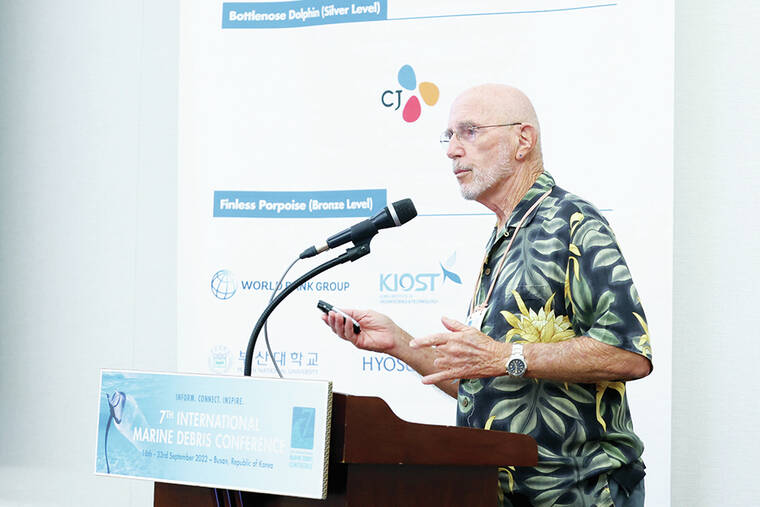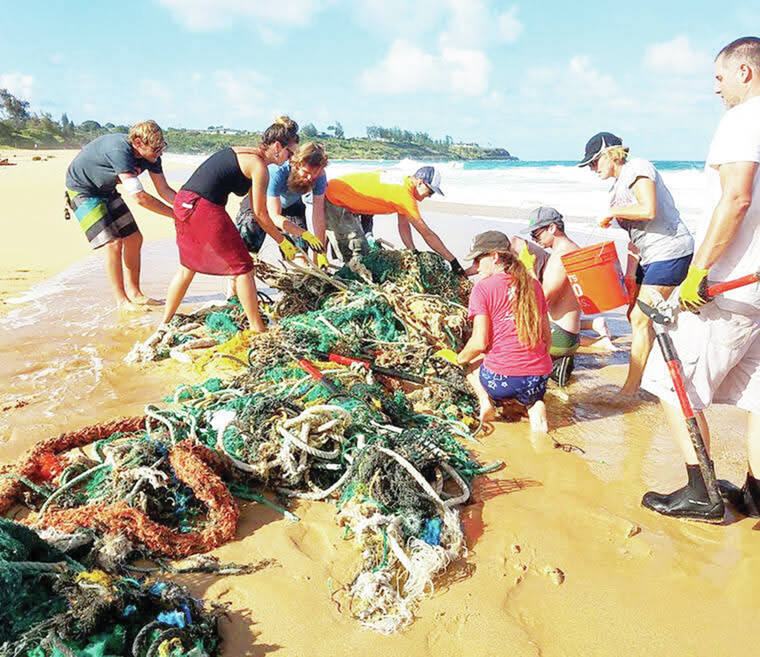LIHU‘E — Most of the marine debris that washes up on Kaua‘i shores comes from a Texas-sized mass of floating ocean trash known as the Great Pacific Garbage Patch.
As the location of the garbage patch shifts amid changing ocean currents, the amount of debris washing up on island has fallen dramatically.
Volunteers and researchers from the Surfrider nonprofit began to see a reduction in debris washing up during their weekly beach cleanups in 2020, a trend that has continued to this day.
“We were seeing 10,000 pounds a month steadily, and now we’re seeing just under 3,000,” said Surfrider Foundation Kaua‘i Chapter Chair Cynthia Welti. “We were so surprised. Then we talked to the (University of Hawai‘i) researchers who said this was what they predicted.”
Their findings are in line with the UH projections, which say the moving garbage patch will lead to less junk washing up on the Hawaiian islands.
Welti, along with Surfrider Kaua‘i Chapter Staff Scientist Carl Berg, recently traveled to the International Marine Debris Conference in South Korea to present a paper on their findings.
In the paper, researchers report that 17.5 tons of debris were collected in the second quarter of 2018 — which fell to 4.7 tons in the fourth quarter of 2021. Most of the debris (71 percent) was fishing gear — nets, ropes and plastic buoys.
This decline has occurred throughout the Hawaiian islands. A quantitative survey from the Hawai‘i Wildlife Fund on Hawai‘i Island found 6,916 pieces of debris in August 2018, as compared with 594 in October 2021.
Marine debris washing ashore presents risks to wildlife living nearby.
Particularly dangerous are traps from Asian eel fisheries, which can ensnare and often kill fish and other marine animals. This includes endangered monk seal pups, who can get caught in traps and starve to death.
Just because there’s less debris washing up on Kaua‘i doesn’t mean there’s less garbage in the ocean in general. The amount of trash in the ocean keeps increasing, Welti said. Researchers remain unclear on where all this debris is washing up instead.
Welti described the reduction of debris as a “breather.”
“I can’t tell you how discouraging it is to clean a beach and come back the next day and have a whole new round of plastic,” said Welti.
This reprieve won’t last forever, however. The Garbage Patch “oscillates,” Welti said, and is projected to return to its old position within the next few years.
Marine debris trends will be discussed at the Kaua‘i Climate Action Forum at 6 p.m. on Nov. 9, titled “Kaua‘i’s Marine Debris: Where Does it Come From? Where is it Going? and Climate Change Impacts.”
Free registration is available at http://bit.ly/kauaimarinedebris.







